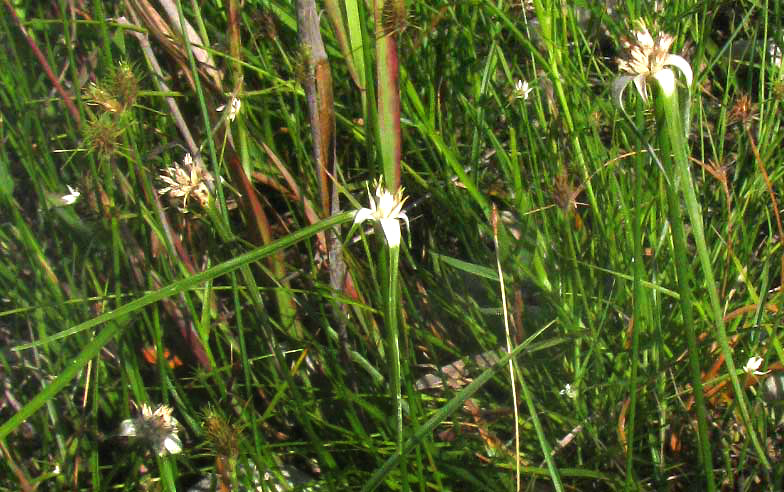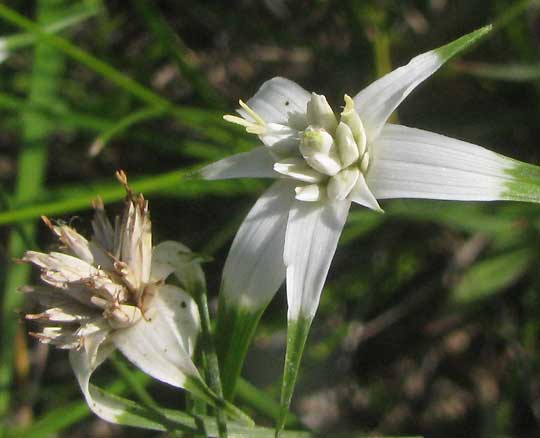Excerpts from Jim Conrad's
Naturalist Newsletter

from the July 14, 2013 Newsletter issued from the Frio Canyon Nature Education Center in the valley of the Dry Frio River in northern Uvalde County, southwestern Texas, on the southern border of the Edwards Plateau; elevation ~1750m (~5750 ft); N29.62°, W99.86°; USA
WHITETOP SEDGE
In certain low, flat, marshy spots along the little Dry Frio River the vegetation gives way to grass-like herbage. Some of the plants are indeed grasses, but if you look closely you'll see many plant types, including sedges, umbrella-sedges, rushes, bulrushes, spikerushes and others.
Usually it's easy to say whether something is a sedge, umbrella-sedge, rush, or the rest, but figuring out which sedge or which rush can be hard. However, in our area, there's one Sedge-Family species so distinctive that when you see it you already know which species it is. In the landscape's visual cacophony of dark green marsh grasses and sedges it shows up as conspicuous, white, somewhat star-shaped blotches about the size of silver dollars, as shown above.
In that picture notice that immediately below the white flower clusters there are down-turned, white-based, leaf-like bracts nearly as long as the plants' stems. A close-up of the white star-shapes appears below:

This distinctive and unmistakable plant is RHYNCHOSPORA COLORATA, known by such common names as White Star Sedge, Starrush Whitetop, Star Rush, White-topped Sedge, and the like. Most plants known as sedges belong to the genus Caryx, so the name Whitetop Sedge is a little misleading, since this isn't a Caryx, but rather a Rhynchospora.
There's another white-topped star-sedge in the region, Rhynchospora nivea, but its white leaf bases are much narrower than the present species'.
Whitetop Sedge occurs in Mexico, the Caribbean area, Central America, northern South America, and the US Southeast mostly along the Coastal Plain. In the Yucatan we found this same species in marshy areas along the sea, especially in Sian Ka'an Biosphere Reserve.